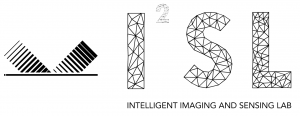Home

The Intelligent Imaging and Sensing Lab (I2SL), under the leadership of Prof. Amit Ashok, focuses on developing novel concepts and approaches in image science with the goal of quantifying and improving task-based performance for a variety of tasks, e.g. image formation, target tracking/detection/classification, across different modalities spanning the electromagnetic spectrum from radio frequencies (RF), infrared/visible (EO/IR) to X-rays. This inter-disciplinary area of research in image science draws from multiple disciplines such as, physical optics, multi-dimensional signal processing, inverse problems, statistical inference, information theory, optimization theory, and seeks to: (a) quantify performance limits of imaging modalities and (b) develop system (measurement) design strategies towards achieving these limits using robust and scalable engineering design principles that can be implemented in lab and real-world operational scenarios.
More specifically, the overarching theme of our research group is to develop scalable information-theoretic approaches to quantify the fundamental limits of a particular imaging/sensing system design using physics-based system forward models and statistical scene models. We have successfully applied such information-theoretic system analysis and design principles to demonstrate significant and realizable system performance improvements for various RF/EO/IR, and X-ray imaging and sensing systems, within the framework of computational imaging. More recently, we have been also pursuing fundamental performance limits of optical imaging and sensing systems arising from the quantum description of electromagnetic fields, using tools from quantum information, estimation, and detection theory. For example, we have made contributions in the analysis of two-point source resolution and extended line source estimation problems in the sub-Rayleigh regime limited fundamentally only by the quantum optical description of light and physically realizable measurement of such light fields.

